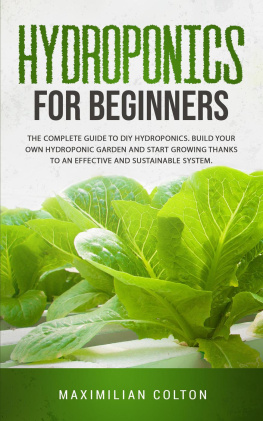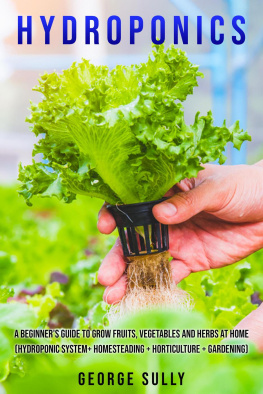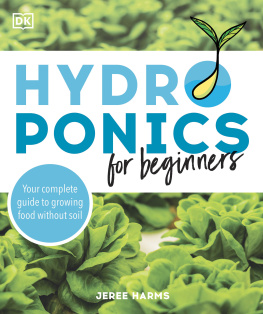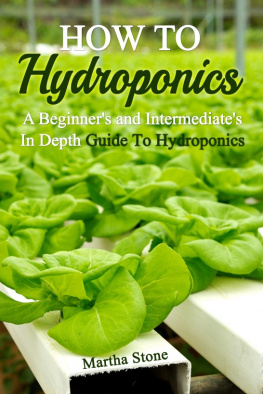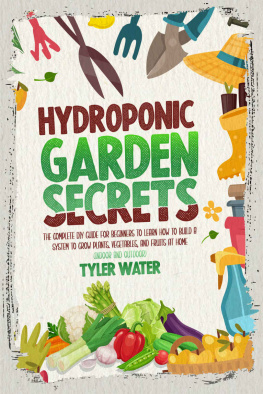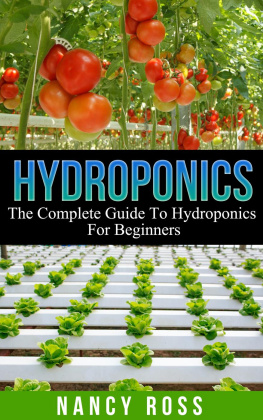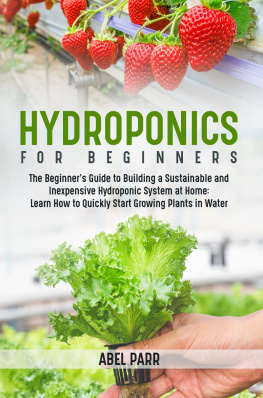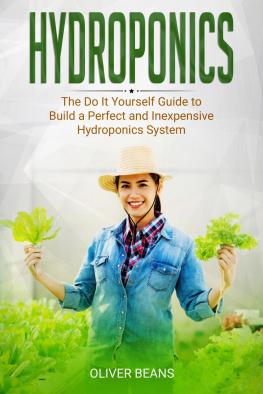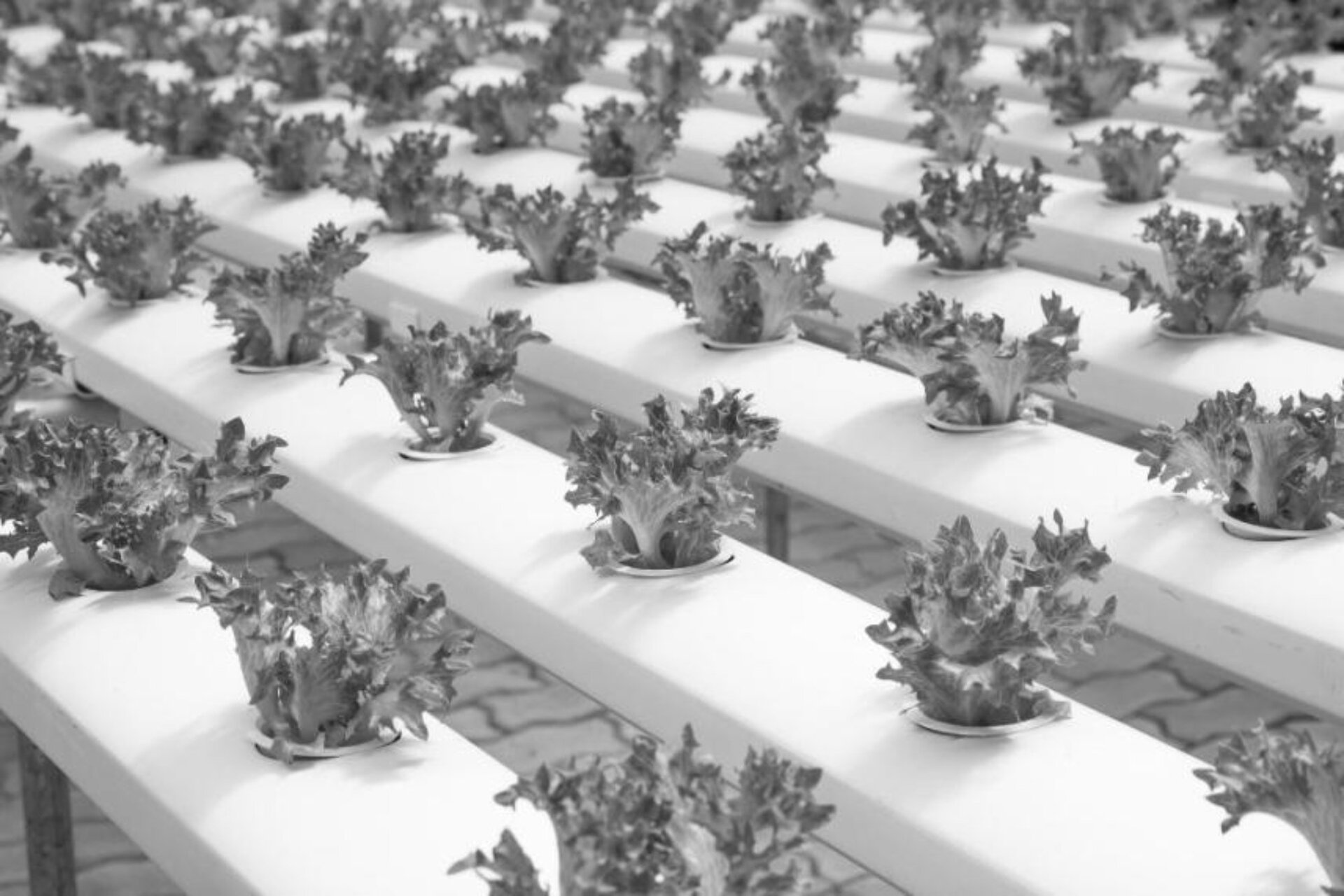James Water - Hydroponics for Absolute Beginners: How to Build your Inexpensive Garden without Soil Fast and Easy (HYDROPONICS GARDENING)
Here you can read online James Water - Hydroponics for Absolute Beginners: How to Build your Inexpensive Garden without Soil Fast and Easy (HYDROPONICS GARDENING) full text of the book (entire story) in english for free. Download pdf and epub, get meaning, cover and reviews about this ebook. genre: Children. Description of the work, (preface) as well as reviews are available. Best literature library LitArk.com created for fans of good reading and offers a wide selection of genres:
Romance novel
Science fiction
Adventure
Detective
Science
History
Home and family
Prose
Art
Politics
Computer
Non-fiction
Religion
Business
Children
Humor
Choose a favorite category and find really read worthwhile books. Enjoy immersion in the world of imagination, feel the emotions of the characters or learn something new for yourself, make an fascinating discovery.

- Book:Hydroponics for Absolute Beginners: How to Build your Inexpensive Garden without Soil Fast and Easy (HYDROPONICS GARDENING)
- Author:
- Genre:
- Rating:3 / 5
- Favourites:Add to favourites
- Your mark:
Hydroponics for Absolute Beginners: How to Build your Inexpensive Garden without Soil Fast and Easy (HYDROPONICS GARDENING): summary, description and annotation
We offer to read an annotation, description, summary or preface (depends on what the author of the book "Hydroponics for Absolute Beginners: How to Build your Inexpensive Garden without Soil Fast and Easy (HYDROPONICS GARDENING)" wrote himself). If you haven't found the necessary information about the book — write in the comments, we will try to find it.
The world of agriculture is constantly evolving, and now it is possible to grow plants and vegetables, even in places where there is no soil! Witchcraft? A fraud? Or is it the future that has also arrived in agriculture and is ready to revolutionize it like never before?
In this Book, written by James Water, a famous Hydroponics expert, you will find all the answers to these questions, and you will understand all the potential that this innovative cultivation technique has.
DOWNLOAD: Hydroponics for Absolute Beginners - How to Build Your Inexpensive Garden Without Soil Fast and EasyWhat does Hydroponics for Absolute Beginners contain?
- Find a complete overview of the history of this innovative cultivation technique. You will understand who was the pioneer who invented it and how it managed to spread it all over the world. You will have all the information to understand what the future of this innovative technology will be and exclusive details on the next advances in technology in the sector, directly from the words of James Water.
- James Water will list absolutely all the Advantages and Disadvantages of this cultivation technique. Thanks to the great sincerity of the famous expert you can understand if this technique can be suitable for your needs. James Waters and his highly descriptive writing style will give you all the information you need to understand whether to implement Hydroponics in your cultivation.
- There are many techniques for using Hydroponic cultivation. In the Book, James Water will list every single technique in detail, combining a simple and clear language. You will discover all the secrets of this type of cultivation, and you will be able to understand which of these techniques is the most suitable to achieve your purpose.
- Have you understood the potential of Hydroponic Cultivation but still dont know how to start? No problem, because James Water has devoted a whole chapter to how to begin cultivation in the best way! In this chapter, everything will be explained, starting from how to prepare the germination area to how to install an adequate lighting system correctly. The temperature of the Grow Room or the ventilation will not be neglected either. At the end of this chapter, you will have all the information you need to start your cultivation in the best way!
- What are the best plants for Hydroponics? You will find out which are the best plants for this type of cultivation and which must be absolutely avoided.
Even if you have never heard of Hydroponic, thanks to this Book, you will have all the information you need to know the enormous potential of this innovative cultivation technique and to start growing what you want!
Would You Like To Know More?This is the Book youve been waiting for. Start growing your plants and vegetables innovatively and inexpensively.
Scroll to the top of the page and select the buy now button.James Water: author's other books
Who wrote Hydroponics for Absolute Beginners: How to Build your Inexpensive Garden without Soil Fast and Easy (HYDROPONICS GARDENING)? Find out the surname, the name of the author of the book and a list of all author's works by series.

